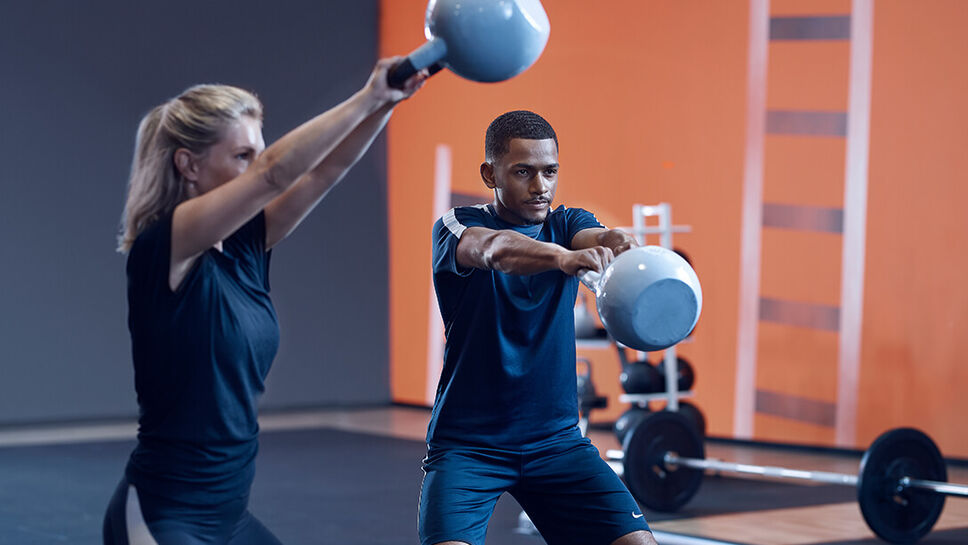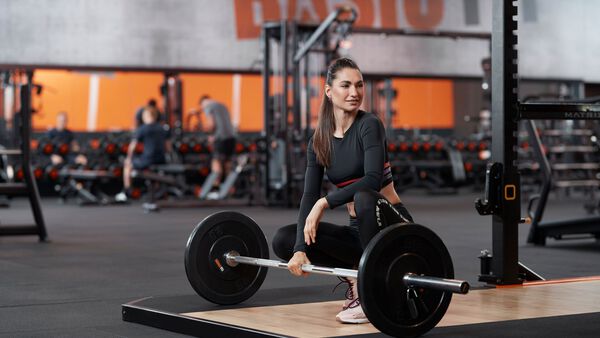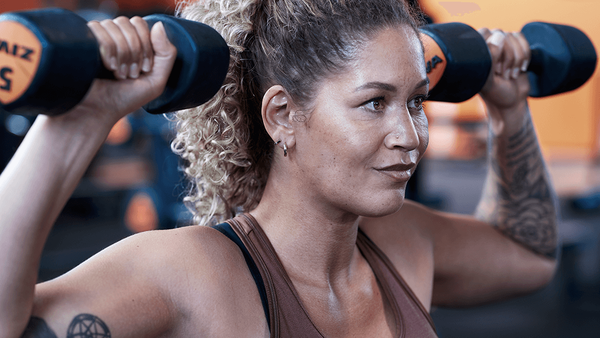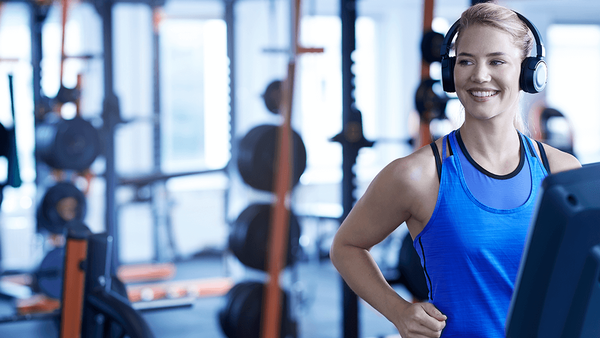A kettlebell is a solid steel ball with a handle. In practically every exercise, the kettlebell is held by the handle, causing the centre of gravity to move away from the hand. This is the main difference from traditional weights, in which the weight is distributed on both sides and the centre of gravity remains on the handle. Thanks to this difference, you’re able to perform a wide variety of exercises that boost interesting benefits.
Improve the stability of your core by training with kettlebells
Kettlebells are ideal for strengthening the muscles of the central core of your body. There are many exercises that will help you to strengthen your abdominals, oblique muscle, lumbar, as well as the deep muscles of the spine. With the help of kettlebells you can improve stability and avoid injuries.
Improve your posture by exercising with kettlebells
As mentioned above, when you train with kettlebells, you shift the centre of gravity from your body. Therefore it’s necessary to make an extra effort to stabilize and control your posture. This helps to strengthen the muscles that allow us to keep our backs straight when we carry out our daily activities, such as sitting in front of the computer.
Improve your explosiveness
Improving your explosive capacity is very useful for sports, where the combination of strength and speed is very important, such as basketball, football or tennis. Explosiveness can be greatly improved with kettlebell training.
Train all muscles with just a single object
Most kettlebell exercises are so popular because they involve multiple muscle groups. In addition, you can perform exercises to train all parts of the body. Squats, shoulder presses, rowing, snatch, Turkish get-up, lunges, swing … the list is almost endless!
How to get the most out of kettlebells?
To achieve the best benefits of kettlebell training, it’s important you adapt the exercises to your own objective. Are you trying to lose weight? Then start your training with strength exercises, followed by a few minutes of HIIT exercises for a cardio workout. I recommend you do 8 rounds of Tabata training, since it has been proven to be very efficient in burning fat (below you’ll find an example of a Tabata training routine). Is it your goal to increase strength? In this case it’s best to use as much weight as you can. Try to do 3 sets per exercise and 2 to 5 repetitions in each one. Do you want to increase resistance? Then it’s best to lower the weight a little and perform between 8 and 10 repetitions per series. For rehabilitation training, use a very light weight and perform 3 sets of about 20 repetitions, providing you experience no pain.
Example of a HIIT workout (Tabata method) with Kettlebell (4 exercises)
Kettlebell swing, 20 seconds.
Rest, 10 seconds.
High traction sumo deadlift, 20 seconds.
Rest, 10 seconds.
Squats, 20 seconds.
Rest, 10 seconds.
Lunges, 20 seconds.
Rest, 10 seconds.
Kettlebell swing, 20 seconds.
Rest, 10 seconds.
High traction sumo deadlift, 20 seconds.
Rest, 10 seconds.
Squats, 20 seconds.
Rest, 10 seconds.
Lunges, 20 seconds.
Rest, 10 seconds.
This blog is written by one of our Personal Trainers, Joyce Mohringer.





